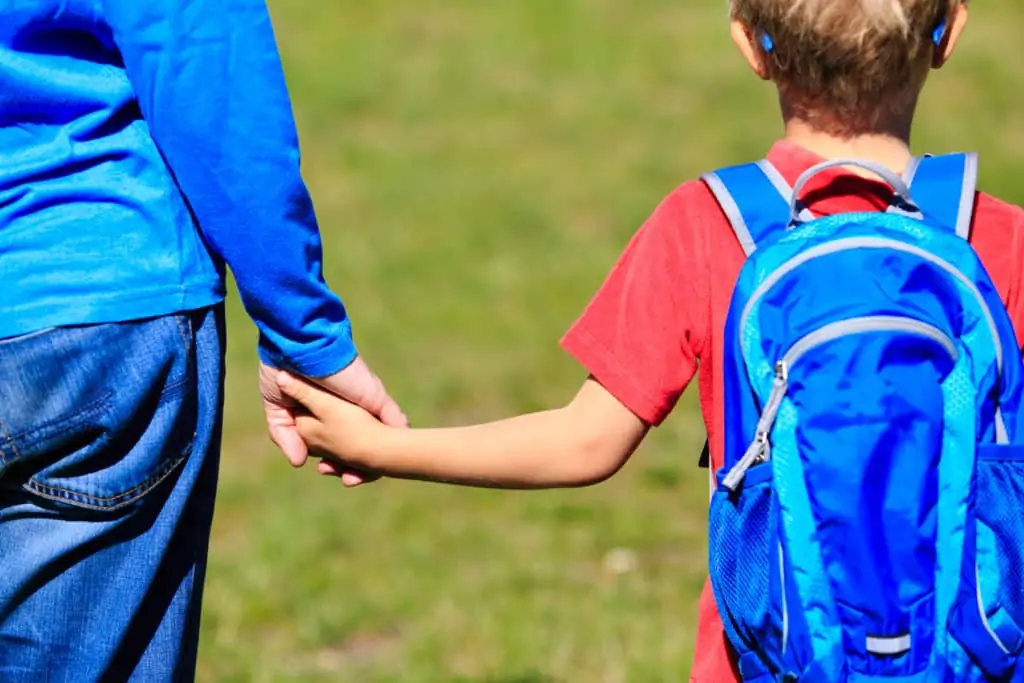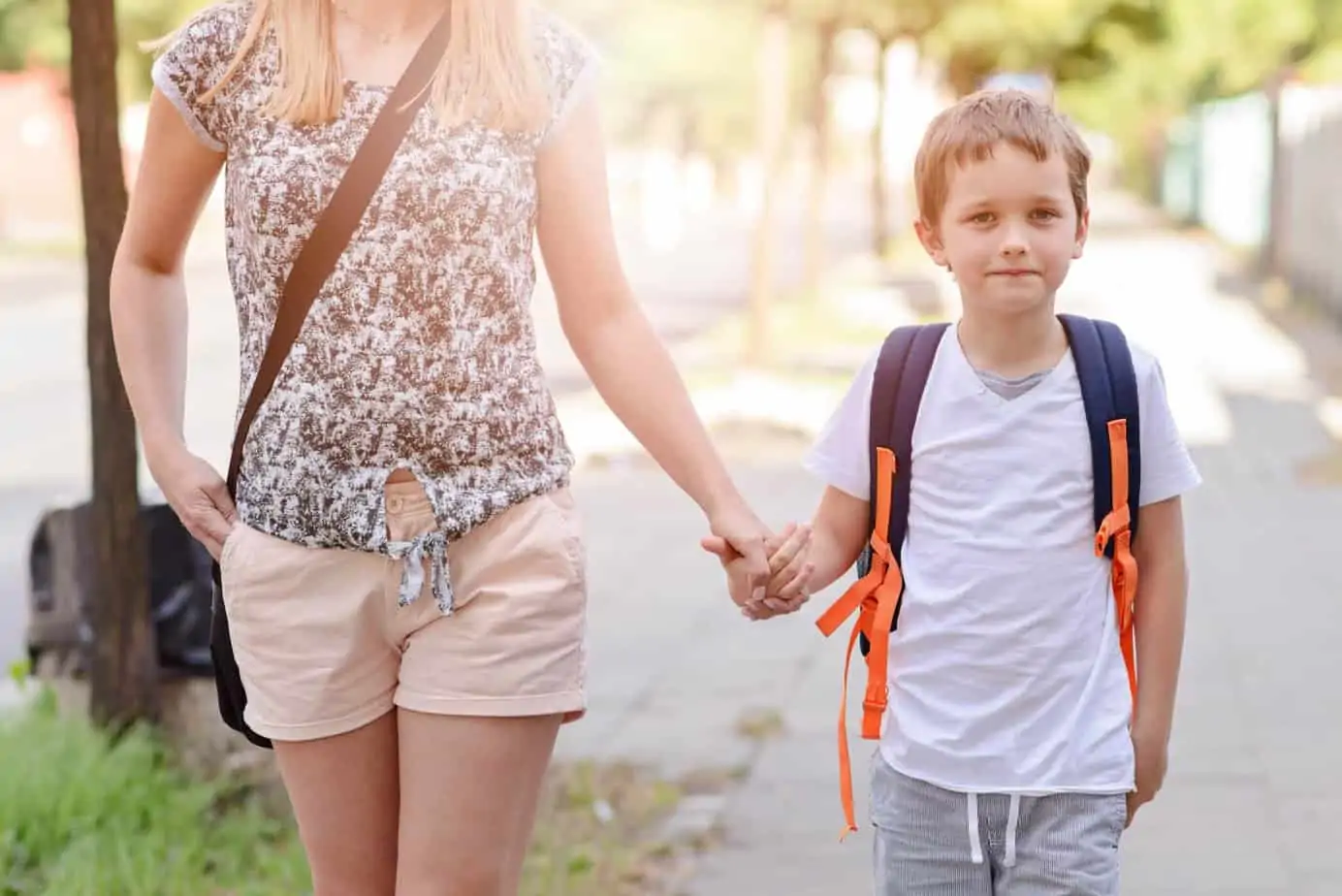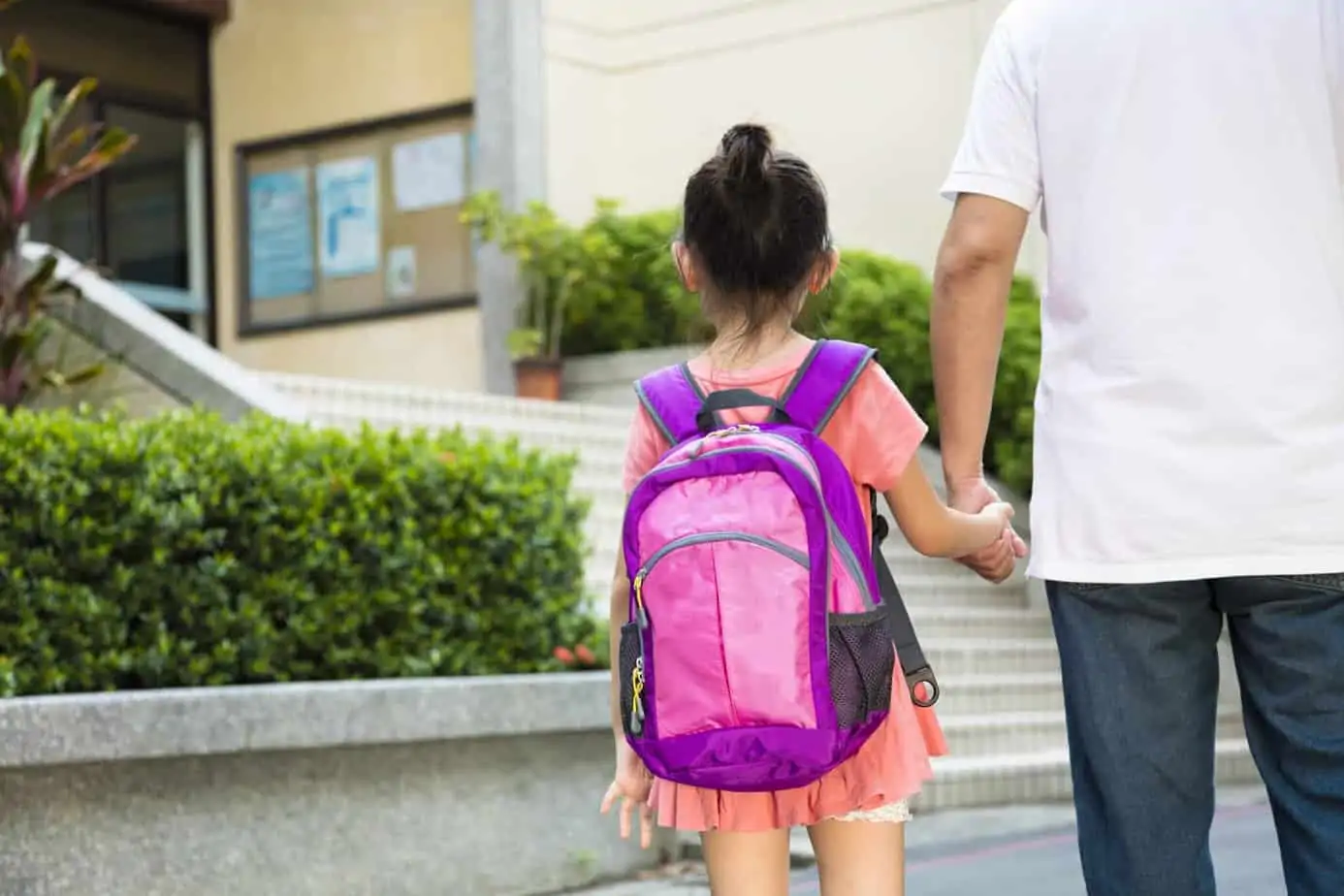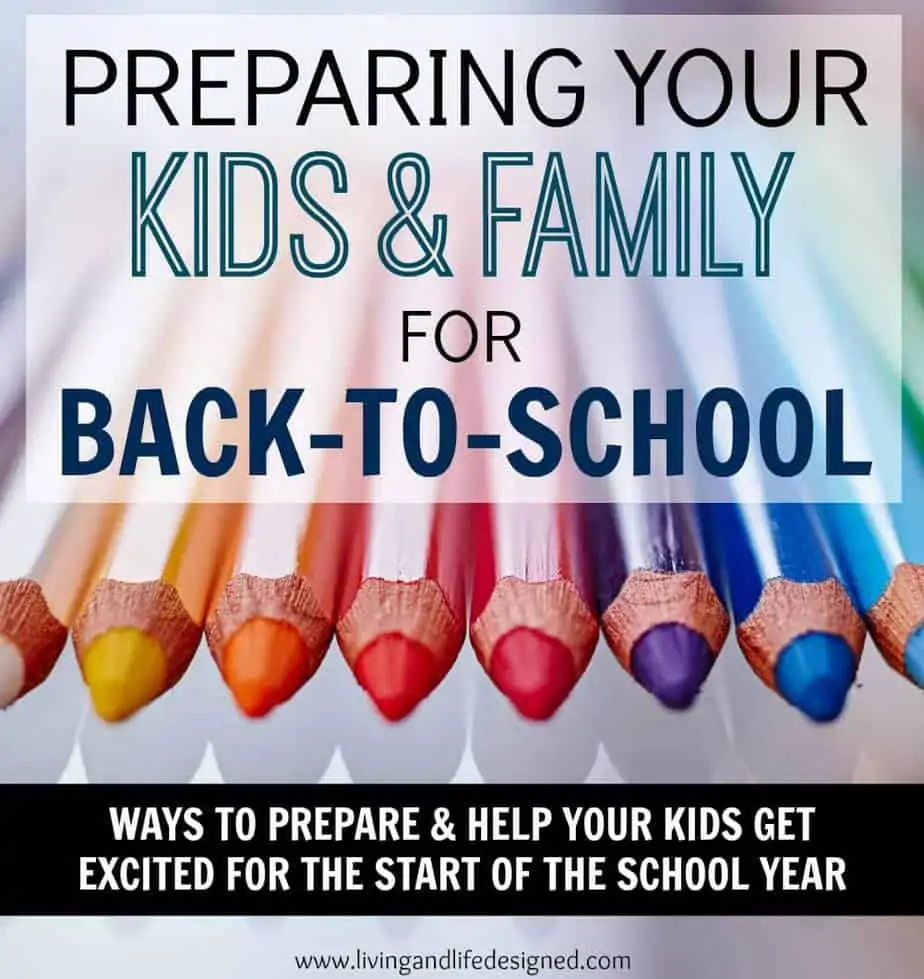Anxiety in children is not uncommon, especially when it’s back to school time. Ease Your Child’s Back to School Anxiety With These Helpful Tips. What are the school anxiety symptoms to spot and how to help your child get ready and excited for school. Try the Emotions Identification Bundle to help support your child in learning, naming, and communicating their feelings and deep dive into what’s going on, on the inside.

Easing your Child’s Back to School Anxiety
Heading back to school – or maybe into school for the first time – is a mixed bag of emotions. Some kids get excited while other began having feelings of being anxious, both of which are perfectly normal.
Transitioning back to school can be difficult for preschoolers through high schoolers, that’s why anxiety in children is not uncommon this time of year.
Leaving the warm summer days behind and afternoons at the pool replaced for early bedtimes and days spent in a classroom and away from Mom and Dad, can make for a tough transition.
Children who normally have little problem leaving Mom and Dad may experience a spike in anxiety.
Prime transition times – the start of Kindergarten, heading into middle school, high school or beginning a new school can be especially challenging and higher incidences of anxiety are more prevalent.
Friends who move away, siblings who used to be at the same school but are now separated or if there has been a big change at home can also exacerbate a child’s worries.
Back to school anxiety is common and tends to peak every year, two weeks before it’s time to return to school.
My twins missed the first three weeks of 1st grade because we were moving to a new town during this time, settling into a new house, leaving behind friends and family and had a lot of new changes coming our way.
When it was finally time for them to head to school, noticeably they both were nervous.
Juliette began clamming up and wanted to be by herself the few days before they were scheduled to start, and Trenton was more argumentative and less cooperative in that same span of time.
This was his way of showing me something wasn’t right and there was more than what meets the eye.
When I asked him what was up, he confessed he was worried all the kids had made friends with one another already and they wouldn’t want to be friends with him since he was starting a few weeks later.
Juliette was nervous about not knowing anyone in our new town and was scared to start at a place where she didn’t know any familiar faces.
Both were completely understandable and normal worries, but because the worries had grown bigger and bigger, it had turned into back to school anxiety.
Anxiety in Children – The Most Common Back to School Worries
- Will I like my teacher and will my teacher like me?
- Will I have any friends in my class?
- Will I fit in?
- Will kids like me?
- What if I get lost at school?
- What if I’m late or miss the bus?
- Will I have any friends at school?
- What if I don’t understand all the school work or know how to do something?
- I don’t want to leave my Mom
- Will other kids like me?
Try the Emotions Identification Bundle to help support your child in learning, naming, and communicating their feelings and deep dive into what’s going on, on the inside.
School Anxiety Symptoms
Sure, worries about heading back to school – a new classroom, teacher and a handful of unknowns can spur on anxiety. These are the sneaky symptoms of anxiety to be on the lookout for:
- Changes in sleep patterns / experiencing sleep disturbances and night waking
- Clingy behavior similar to what babies experience with separation anxiety
- Anxious behavior such as fidgeting, nail biting, chewing on objects, hair twirling
- Stomach pains and upset tummy
- A spike in emotional behavior such as tantrums, meltdowns, increased irritability and/or crying
Related: Handling Toddler Tantrums: Big Emotions & Helping Your Toddler Feel Heard
Here are tips to help you with helping your nervous kids successfully transition back to school.
How to Help Your Child Beat Back to School Anxiety
1) Avoiding School is Not an Option
Avoiding school because of your child’s worries isn’t really a logical option, and if you allow them to avoid school, this can reinforce their fears and make them more anxious. Missing school will lead to getting behind on work and ultimately, creates bigger problems.
It also robs your child of getting to know their teacher, starting friendships and mastery of the school system.
One way of getting your child’s worries out in the open is having him write them down on a piece of paper. Writing down worries has been shown to release the burdens your child is carrying and if you burn them, rip them up or use a worry eater doll to eat the worries, they’re more likely to help them dissipate, if not disappear all together.
2) Add Extra Time In The Morning to Avoid a Rush
I know adults also feel anxious when they’re rushing around in the morning to get out the door on time. It’s not surprise that kids feel the same way.
Plan for extra time in the morning so your kids have enough time to get ready, eat a healthy breakfast and get ready for the day without feeling rushed to head out.
Prepare the night before by:
- Pre-Pack lunches
- Setting out the next day’s outfits to speed up getting dressed in the Am
- Check homework, sign parent forms, pack backpacks
- Fill water bottles
- Prep Breakfast (overnight oats are a easy & filling breakfast for school days!)
Routine cards are a great way to help your child move through all the steps in the morning, and also see what the rest of their day looks like. Kids thrive with predictability because it makes them feel safe – exactly what a routine and using routine cards do.
3) Make Sure The Basic Needs are Met First
Kids can better handle transitions and new experiences when they are rested, aren’t hungry and feel prepared. Kids who are anxious tend to eat a little bit less and being hungry can feed a bad mood and anxious behavior.
Two weeks before school starts, get your kids to bed at an appropriate time based on when they need to wake up and get ready for school. Make sure they’re getting enough rest based on their age and how active they are during the day.
Related: Comprehensive Sleep Charts & Sleep Guidelines for Infants Through Adolescents
4) Don’t Just Give Reassurance – Problem-Solve Together
Kids often seek reassurance from Mom and Dad their fears won’t happen but don’t be tempted to assure them with blanket statements such as saying “everything will be Ok,” “don’t worry about those things,” or “I promise, you’ll like school.”
Instead, discuss your child’s fears with them, empathize with their rationale and then address those fears and problem solve. Think of ways to strategically to solve each situation.
For example:
Worry: If your child is worried they won’t have anyone to sit with at lunch.
Solution: he could ask one new classmate in the morning if they want to eat lunch together or ask around the neighborhood for same-grade kids to help your child get to know some familiar faces to look for at lunchtime.
Another example:
Worry: Your child is worried they won’t make any friends at school.
Solution: Suggest your child make a card for their teacher and to write inside, “I’m scared of going to school and not making any friends” inside so their teacher knows they are feeling anxious and apprehensive and could help pair them up with another classmate.
Check out the Growth Mindset Set for kids, to build confident, resilient, thriving and positively-minded children.
5) Take a Couple Test Runs
If your child’s worries don’t seem to be easing leading up to school, head over to the school campus to casually stroll around and walk the halls.
See if you can talk with an administrator and explain your child’s back to school worries. They may even let you locate their classroom and all the key areas to the school like the bathroom, cafeteria, library and playground. Check to see if there is an open house where you can walk the campus during this time as well.
Begin driving to the school as part of your routine, even stopping in the parking lot to test run a drop off or walking to the line-up area. The more familiar your child is with the school, the more this can help ease their worries.
6) Be Conscious of Your Own Back to School Worries
Kids pick up a lot from their parents – whether spoken or just in your body language. If you’re feeling worried, sad or anxious about sending your kids back to school they will most definitely pick up on this.
Sending your kid to Kindergarten to start their academic years or feeling the pressure to get your kids on a solid bedtime routine and organize all the back to school supplies and schedules may have you feeling anxious too.
You don’t want to pass along this stress to your children who can internalize it and experience mood disorders like anxiety. Get your own stress and worries in check so they aren’t contagious to your kids.
Talk about your child’s feelings and your own worries as a parent and family. Work through your feelings openly and together so no one silently struggles.
If your child is having trouble naming their emotions or communicating with you, emotion picture cards can be a huge lifesaver. They literally find a picture that closely mirrors what they themselves are feeling, and it helps to explain their emotions. It’s also a great tool for building emotional intelligence.
Related: Tools to Give You Immediate Relief From Parenting Anxiety & Stress
Routine Cards Create a Consistent & Anxiety Free Schedule
Routine cards are a wonderful way to help kids remember what comes next, whether it’s for the morning, bedtime or an entire day. These printable routine cards come in boy and girls styles and include chore cards, and our online store offers printable morning and bedtime charts with coordinating routine cards.
You Might Like…
- Helping Kids with Transitions: Switching Gears without Tears
- Best First Day of School Tradition to Help Calm School Nervousness
- Navigating the After-School Meltdown: How to Help Your Child
- 11 Helpful Charts for Kids: Chores, Reward & Daily Routines to Help Kids Thrive
- Helping Your Kids Get Ready to Go Back to School
- Take the Choas Out of Busy School Mornings
Want even more?
Shop All Parenting Resources
Shop all of our parenting resources from self-regulation tools and managing big emotions to building self esteem and confidence. There are resources for all seasons of life!








